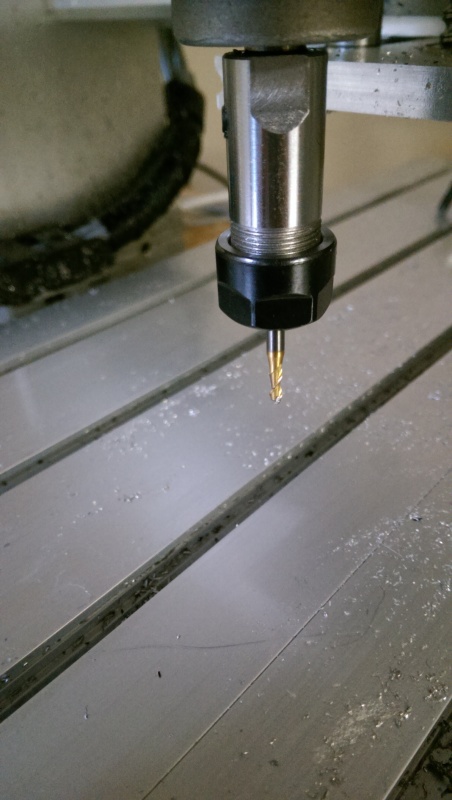DominicASP
Materials
- Feb 27, 2015
- 11
I just bought a Chinese 3040 230W engraving CNC machine and have recently been struggling with milling operations on aluminium as you can see on my previous forum posts. I am trying to cut through a 4.3 mm thick aluminium box with a TiN coated carbide 2 flutes 42degree end mill with the following specs:
[ul]
[li]Mill Diameter: 3/32" (2.38 mm)[/li]
[li]Shank Diameter: 1/8" (3.175 mm)[/li]
[li]Length of Cut: 1/4" (6.35 mm)[/li]
[/ul]
I am trying to cut a profile through the entire thickness of the box. To generate my gcode, I used CamBam with the following parameters:
[ul]
[li]Depth Increments: 0.5mm[/li]
[li]Target Depth: -4.5mm[/li]
[li]Cut Feedrate: 125 mm/min[/li]
[li]Plunge Feedrate: 62 mm/min[/li]
[li]Spindle Speed: 6000 rpm[/li]
[li]Tool Diameter: 2.38 mm[/li]
[li]Inside Profile Cut (Rectangular Shape)[/li]
[/ul]
I have been trying 4 times to complete the operation but every single time, at some point, I would start hearing a really harsh noise and could see that my spindle speed was gradually slowing down or even see my end mill completely jam in the aluminium. When it happened, I always tried to shut down my controller as fast as I could to prevent further damage to my machine but during my last trial, the fuse blew and had to replace it. I use WD-40 as a lubricant and compressed air to blow the chips away.
Since I was able to cut through softer 1.25 mm thick aluminum plates with the same machine, end mill and parameters, I am wondering what is causing my problems. At a first glace, do my parameters look good? Is my machine powerful enough to complete such operation? Any hints/tips would be greatly appreciated! Thanks a lot!
[ul]
[li]Mill Diameter: 3/32" (2.38 mm)[/li]
[li]Shank Diameter: 1/8" (3.175 mm)[/li]
[li]Length of Cut: 1/4" (6.35 mm)[/li]
[/ul]
I am trying to cut a profile through the entire thickness of the box. To generate my gcode, I used CamBam with the following parameters:
[ul]
[li]Depth Increments: 0.5mm[/li]
[li]Target Depth: -4.5mm[/li]
[li]Cut Feedrate: 125 mm/min[/li]
[li]Plunge Feedrate: 62 mm/min[/li]
[li]Spindle Speed: 6000 rpm[/li]
[li]Tool Diameter: 2.38 mm[/li]
[li]Inside Profile Cut (Rectangular Shape)[/li]
[/ul]
I have been trying 4 times to complete the operation but every single time, at some point, I would start hearing a really harsh noise and could see that my spindle speed was gradually slowing down or even see my end mill completely jam in the aluminium. When it happened, I always tried to shut down my controller as fast as I could to prevent further damage to my machine but during my last trial, the fuse blew and had to replace it. I use WD-40 as a lubricant and compressed air to blow the chips away.
Since I was able to cut through softer 1.25 mm thick aluminum plates with the same machine, end mill and parameters, I am wondering what is causing my problems. At a first glace, do my parameters look good? Is my machine powerful enough to complete such operation? Any hints/tips would be greatly appreciated! Thanks a lot!

